Scrambled Eggs (5 GIFs)
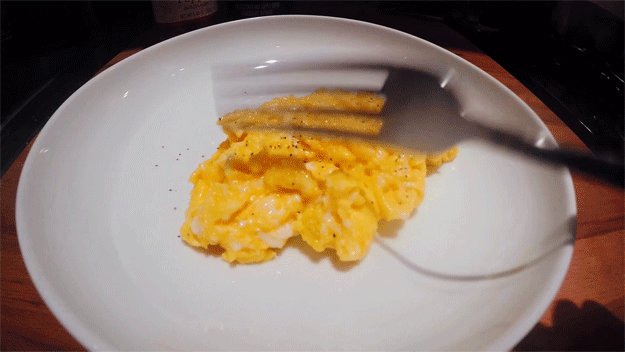 Time: 10 minutes
Time: 10 minutes
Makes: 1 serving
Ingredients:
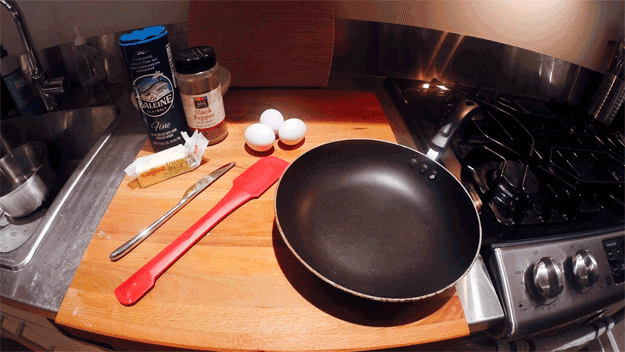
- 3 Eggs
- Salt and ground black pepper
- 1-2 tablespoons butter
Steps:
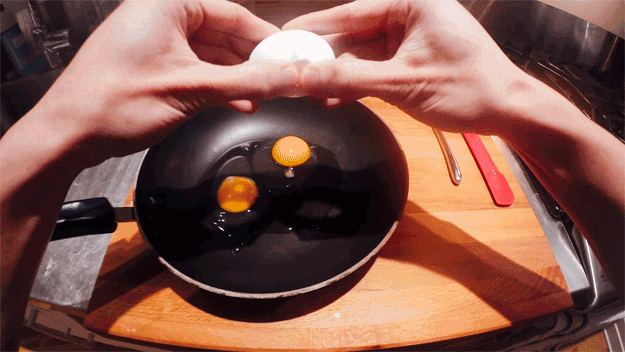
↑ 1. Crack the eggs1 into a nonstick pan2 and add 1 tablespoon of butter.
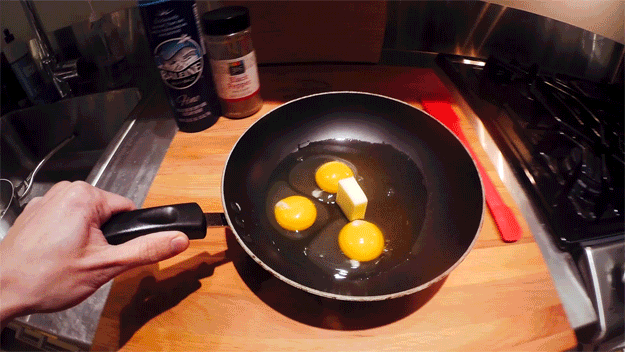
↑ 2. Set the pan over medium heat. Immediately start mixing the eggs and butter with a spatula.
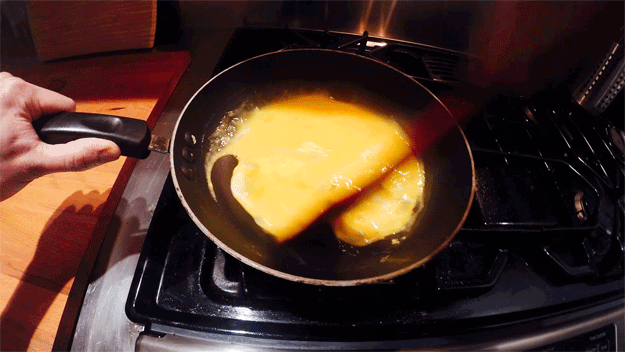
↑ 3. In about 2 minutes, the eggs will begin to curdle3. When you see this, remove the pan from the heat and continue stirring until the cooking slows down a bit. Then after 30 seconds, return the pan to the heat and keep stirring.
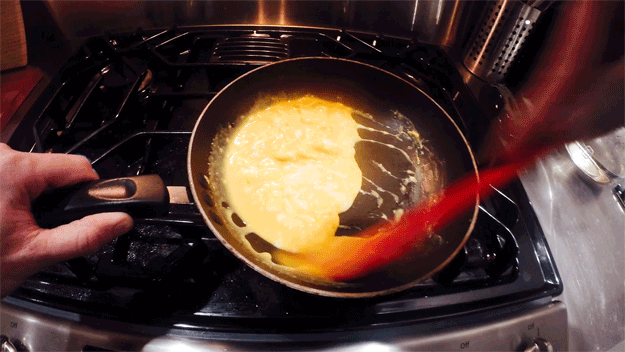
↑ 4. Repeat this 30-seconds-on-the-stove / 30-seconds-off-the-stove process a few times until the eggs are creamy, soft, and still a bit runny. Remember – even after you turn off the heat, the eggs will continue cooking a bit more…

↑ 5. Turn off the heat and move the eggs to a plate. Season with a pinch of salt and pepper, and enjoy!
Resources:
- BBC | Perfect Scrambled Eggs
- Alton Brown | Perfect Scrambled Eggs
- Incredible Edible Egg | Stovetop Scrambled Eggs
- Bon Appetit | Tips for the Best Scrambled Eggs Ever
- About | Perfect Scrambled Eggs
- America’s Test Kitchen | The Science of Good Cooking: Master 50 Simple Concepts to Enjoy a Lifetime of Success in the Kitchen
- Mark Bittman | How to Cook Everything: The Basics
Hard & Soft Boiled Eggs (7 GIFs)
Mrs. B taught me this easy 6-minute method of boiling eggs from The Kitchn.
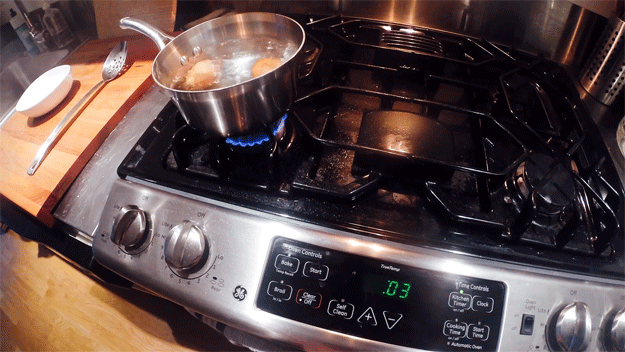 Time: 10 minutes
Time: 10 minutes
Makes: 1 serving
Ingredients:
- 2-3 Eggs
- Salt & ground black pepper
Steps:
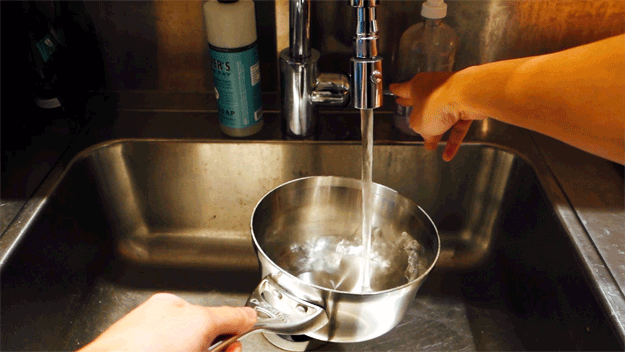
↑ 1. Fill a pot about halfway with water – enough to cover your eggs.
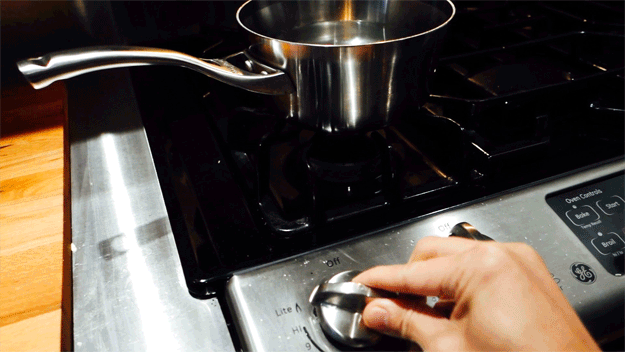
↑ 2. Cover the pot and set it on high heat.
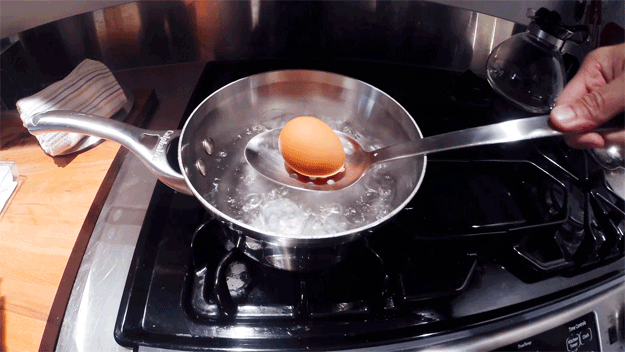
↑ 3. When the water starts boiling (about 6 minutes), use a spoon to gently add your eggs to the pot.

↑ 4. Adjust the heat so the water bubbles gently (not a hard boil). Set a timer depending on how you like your eggs. Each minute makes a difference, so pay attention4:
- 3 minutes = completely runny yolk and slightly liquid white
- 4 minutes = white very soft but set
- 6 minutes = cooked but runny yolk; white may be undercooked
- 7 minutes = fully cooked white; some of the yolk may have hardened.
- 8+ minutes = hard boiled.
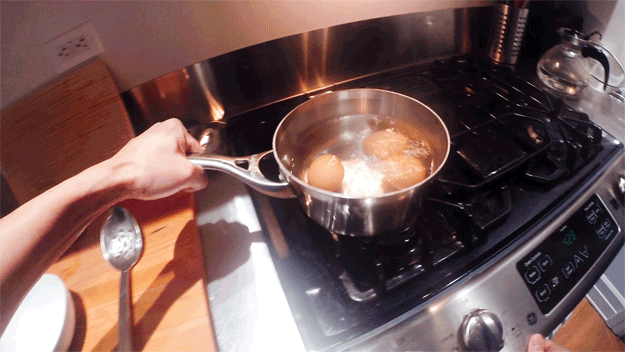
↑ 6. When your timer is up, turn off the heat, bring the pot to the sink and slowly replace the hot water with cold water. Make sure the eggs don’t fall out.
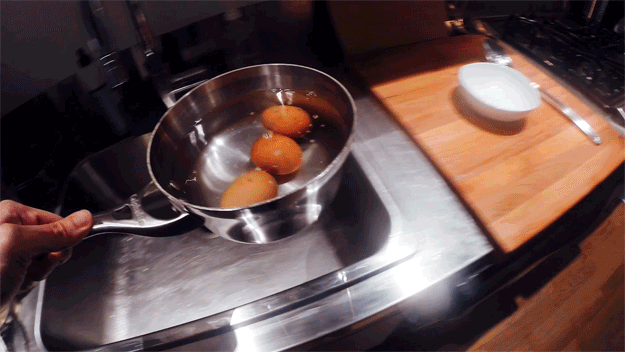
↑ 7. Fill the pot with cold water and let it sit on the stove. Cooling the eggs quickly after cooking helps prevent the yolk from developing a (harmless) green ring.
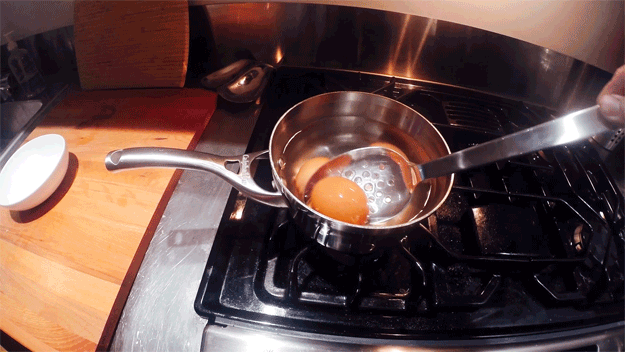
↑ 8. After 1 minute, touch the eggs with your fingers. If they feel hot, empty the water from the pan and replace with fresh cold water. When the eggs are cool enough to hold, remove them from the pot.
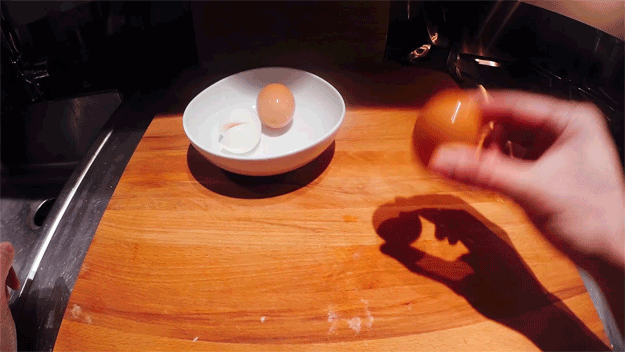
↑ 9. Crack the eggs gently, peel them, sprinkle with salt & pepper and enjoy!
Summary
- The degree of egg-doneness is mainly a matter of timing
- The only real rule is not to overcook them or they will toughen
- It’s easy to avoid toughening – use low heat
- But… you can cook on high heat and still keep eggs tender & soft; it just takes attention.
- Room-temperature eggs will take about 1 minute less to cook than those straight from the refrigerator.
- Scrambled eggs turn out silkier the more you stir. Control the temperature (keep the heat low) by moving the pan on and off the burner
- Boiled eggs are less like to be damaged in water that bubbles only gently.
How to Crack an Egg – Smack the side of the egg definitively – but not too aggressively – on a flat surface, stopping your hand when you hear the shell crack. This helps keep egg shell bits from getting into your food.↩
Choosing the right pan – Pan size is important when scrambling eggs. If the pan is too large, the eggs spread out in too thin a layer and overcook. A smaller pan forces you to mound the eggs on top of each other, which traps steam and ensures tender, fluffy eggs.↩
 Source: Butter Than Toast↩
Source: Butter Than Toast↩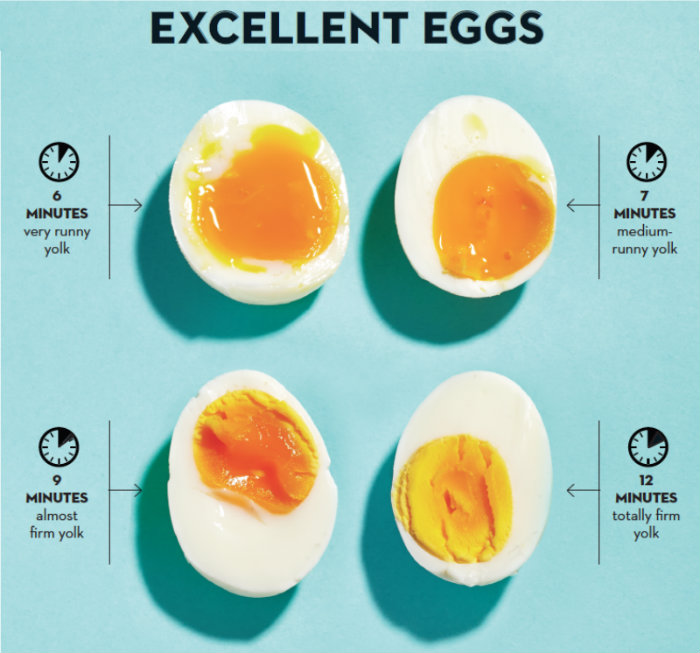 Source: Chatelaine↩
Source: Chatelaine↩